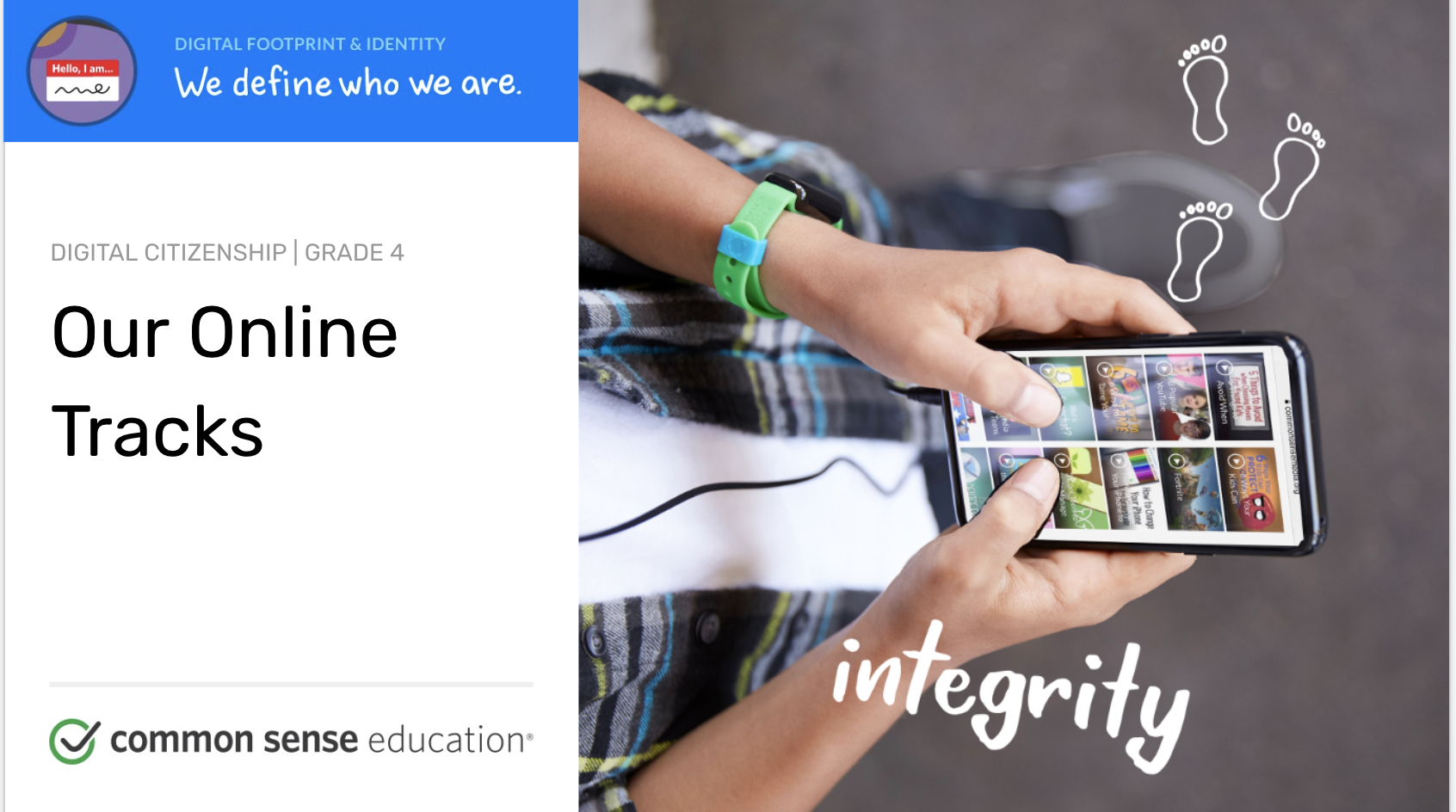2a: Digital Identity | Our Online Tracks | 3-5

Student Objective
Students will be able to:
-Define the term "digital footprint" and identify the online activities that contribute to it.
-Identify ways they are -- and are not -- in control of their digital footprint.
-Understand what responsibilities they have for the digital footprints of themselves and others.
Instructions
Original Post from Common Sense Education
- Sign up for a free account at commonsense.com/education
- Go to the linked website here to view full lesson and resources
- Warm up: Follow the Track! Students will make inferences about animals using their fossils and connect this to the information associated to our digital footprints
- Analyze: Camilla’s Footprint in an activity that emphasizes the students’ control of what and how information is stored on the internet.
- Evaluate: On Your Honor. Students discuss their responsibilities to themselves and to others while online.
- Extension Activity: Give the students time to write a letter to their family and community members (coaches, babysitters, counselors, etc.). Refer the students to the responsibilities captured in On Your Honor, step 2. The letters should include:
- A description of a digital footprint.
- An explanation that sometimes people have control over their footprint and sometimes they do not.
- Two rules the student would like his or her family and community to agree to follow in their digital activities to help protect the student’s digital footprint. And, two rules the student will agree to follow to protect family members’ digital footprints.
Justification
In this instructional idea relates our digital footprints to those left by fossils. Fossils are marks left from many years ago that still give us lot of information about the animals that left them. Our digital footprints can do the same. Students learn what and how information is stored and leaves evidence. They then work to identify and articulate their responsibilities to themselves and others online to control and protect everyone's digital identity, security and privacy.

